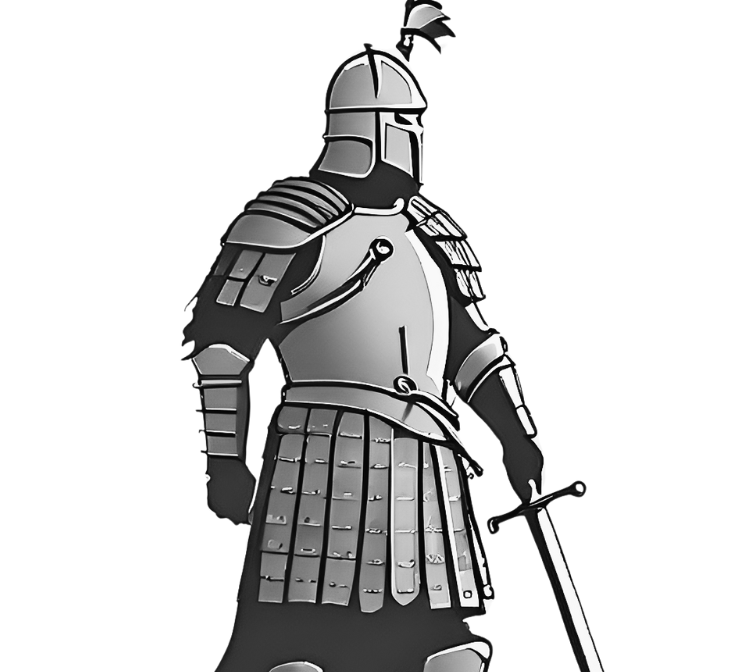Born around 1270, Wallace rose from relatively humble beginnings to lead a fierce resistance against the occupying forces of King Edward I of England during the Wars of Scottish Independence. His leadership, courage, and eventual martyrdom turned him into a symbol of Scottish pride and defiance.
Early Life
Little is known about William Wallace’s early life, and much of his biography has been embellished by legend and folklore over the centuries. He was likely born into a family of minor nobility, possibly in Elderslie, Renfrewshire, or Ellerslie in Ayrshire, though his exact birthplace is disputed. Wallace would have received a basic education and training in combat, as was typical for sons of the lesser gentry.
Wallace grew up during a time of increasing tensions between Scotland and England. Following the death of the Scottish King Alexander III in 1286 and the subsequent death of his granddaughter Margaret, the Maid of Norway, Scotland was left without a clear heir to the throne. This led to a power struggle, which Edward I of England sought to exploit by attempting to impose his authority over Scotland.
The Rise of Wallace
In 1296, King Edward I invaded Scotland and deposed John Balliol, the Scottish king, declaring himself overlord of the Scots. This invasion triggered widespread unrest and rebellion, and Wallace quickly emerged as a key leader in the resistance against English rule. The details of Wallace’s early activities are unclear, but he gained a reputation as a fierce and determined freedom fighter.
Wallace’s rise to prominence is traditionally marked by an incident in 1297 in which he killed William Heselrig, the English Sheriff of Lanark. According to some accounts, this act of defiance was motivated by personal revenge, as Heselrig had allegedly killed Wallace’s wife or lover, Marion Braidfute, though this story may be apocryphal. Regardless, the slaying of Heselrig sparked a larger rebellion, and Wallace soon began to attract followers.
The Battle of Stirling Bridge (1297)
Wallace’s most famous victory came at the Battle of Stirling Bridge on September 11, 1297. At this battle, Wallace, alongside Sir Andrew Moray, led a Scottish force against a much larger and better-equipped English army. Despite being heavily outnumbered, Wallace and Moray used the terrain to their advantage. They waited until a significant portion of the English army had crossed the narrow Stirling Bridge before launching a devastating attack, cutting off the English forces on the bridge and causing panic among the rest of the army.
The Scottish victory at Stirling Bridge was a major turning point in the war, and Wallace’s reputation as a military leader was cemented. After the battle, Wallace was knighted and appointed Guardian of Scotland in the name of John Balliol, the deposed Scottish king.
The Battle of Falkirk (1298)
Wallace’s success was short-lived. In 1298, King Edward I personally led a massive army into Scotland to crush the rebellion. The two sides met at the Battle of Falkirk in July 1298. Despite Wallace’s best efforts to deploy his troops in a defensive formation using schiltrons (circles of spearmen), the English army’s superior numbers and the use of longbowmen overwhelmed the Scottish forces. Wallace suffered a crushing defeat, and many of his soldiers were killed.
After Falkirk, Wallace resigned as Guardian of Scotland, though he continued to fight for Scottish independence in a more guerrilla-style capacity.
Capture and Execution
In 1305, after years of evading capture, Wallace was betrayed by a fellow Scot, Sir John de Menteith, and handed over to the English. He was taken to London, where he was tried for treason, despite having never sworn allegiance to Edward I. Wallace famously defended himself, declaring that he could not be a traitor to a king he had never served.
On August 23, 1305, Wallace was brutally executed in London. He was hanged, drawn, and quartered—a particularly gruesome form of execution reserved for traitors. His head was displayed on London Bridge, and his limbs were sent to various locations in Scotland as a warning to others.
Legacy
Despite his defeat and execution, Wallace’s legacy as a symbol of Scottish resistance against English domination grew after his death. His heroism and commitment to Scottish independence became legendary, immortalized in poems, songs, and stories passed down through generations.
In the centuries that followed, Wallace’s reputation continued to grow, particularly in the 19th century, when Scotland experienced a revival of interest in its national identity. The National Wallace Monument, a tower near Stirling, was erected in 1869 in his honor, and it remains a popular tourist destination today. Wallace’s life and struggle for freedom were also popularized in modern times by the 1995 film “Braveheart”, though the film took significant liberties with historical accuracy.
William Wallace in Scottish History
William Wallace remains an enduring figure in Scotland’s history. Though he did not live to see Scotland win its independence, his actions laid the groundwork for future leaders, including Robert the Bruce, who would ultimately secure Scotland’s freedom at the Battle of Bannockburn in 1314. Wallace is remembered as a national hero who fought for the rights and freedom of his people, embodying the spirit of resistance against oppression.


